About Shockwave Therapy at NYDNRehab
Shockwave therapy begins with a tissue scan using the highest resolution ultrasound equipment. Once we identify the treatment area, we map the focal region, including target size and depth. Next, we mark the area to be treated and set our transducer at the appropriate depth. We use high-resolution ultrasound imaging to guide the shockwave procedure, to ensure accuracy. To follow up after the shockwave procedure, we use high-resolution ultrasonography to monitor the healing process and visualize any changes in the tissues over time.
Dr.Kalika has over 20 years of experience in ultrasound guided procedures. He has been an active member of the International Society of Medical Shockwave Therapy (ISMST) since 2007, and has treated thousands of patients using ESWT. Our clinic features the only shockwave equipment available that lets us combine focused, defocused and radial shock waves.
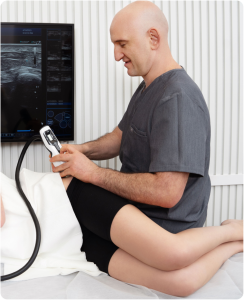
Most injuries involve multiple types of tissues at varying depths, covering varying amounts of area. The majority of clinics that offer shockwave therapy as a service only offer radial EPAT therapy, which is only effective for limited types of conditions. At NYDNRehab, we combine different types of shockwaves to penetrate varying depths, cover specific areas, and apply appropriate energy for individual tissue types.
Different types of shockwaves can be combined to accomplish multiple goals in a single session:
Technology provides us with sophisticated tools for treating musculoskeletal disorders, but technology alone is not enough to successfully repair damaged tissues. Tissue regeneration is an incredibly complex process that requires a broad understanding of physics, biology, anatomy, movement, and imaging.
Prior to your first regenerative shockwave treatment, we perform a diagnostic ultrasound scan. Ultrasound imaging lets us identify the precise area of concern, and helps us to select the right pulse frequency and gauge the size and depth of the targeted tissues. This allows us to select the most appropriate machine, as focal zones and wave types differ for different injuries. We then mark the area to be treated and set our equipment to the appropriate depth and angle, ensuring that the focused shockwaves render the greatest benefit.
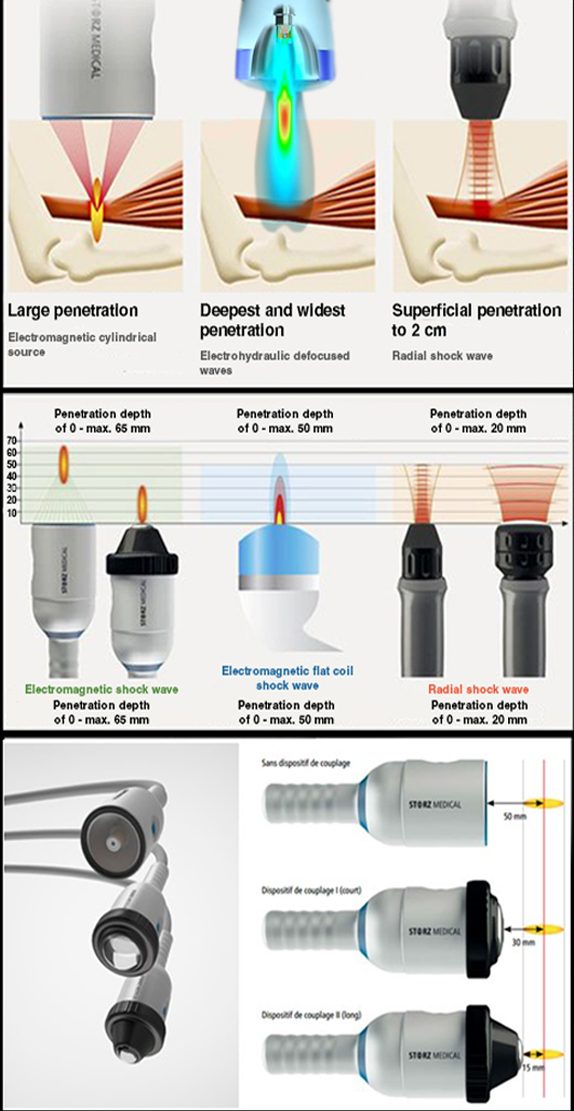
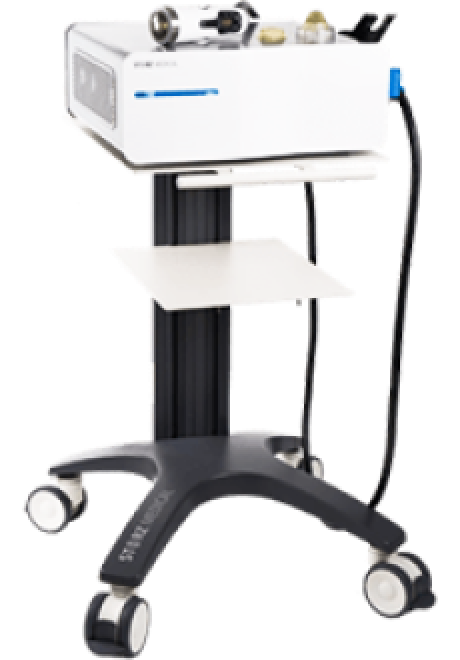
At NYDNRehab, we use three different shockwave machines for focused, defocused, linear and radial shockwave treatment. Each type of shockwave has its own advantage over the others, to address different types of tissues. Most pathologies involve multiple tissue types, and they are all connected. With multiple options for treatment, we are able to vary the depth and width of penetration, zoom in to focus on specific tissues, and zoom out to cover larger areas.
This proprietary technology is based on a unique set of pressure waves that stimulate the metabolism, enhance blood circulation and accelerate the healing process. After treatment, damaged cells gradually regenerate and damaged tissues eventually heal. These non-invasive outpatient procedures represent breakthrough treatment options for a broad range of musculoskeletal conditions.
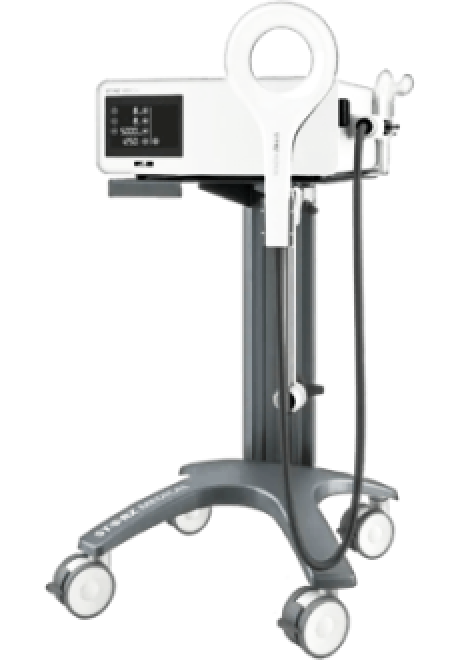
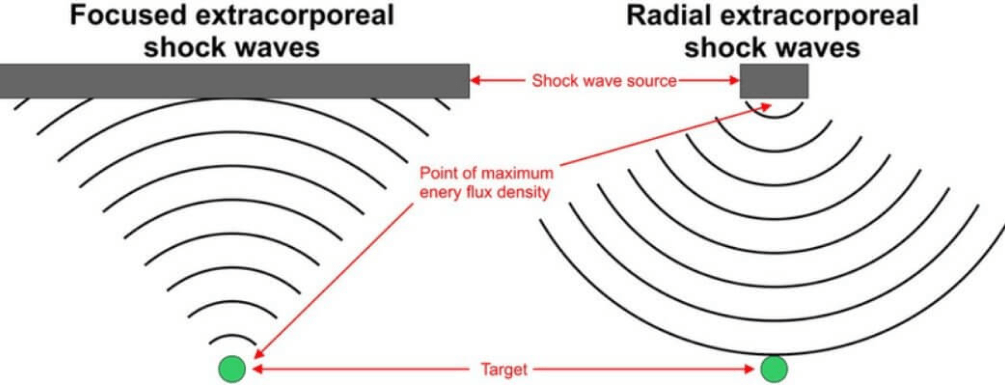
Radial and focused shockwaves are often used in combination to treat acute and repetitive overuse injuries in athletes.

EPAT radial waves are often advertised as shockwave therapy, but they are not true shockwaves – they are mechanical pressure waves that have only very mild regenerative effects on muscles and fascia.
EPAT has very shallow penetration depth, 3-4 times less than focused shockwaves. Its mechanical waves do not stimulate stem cell production, and its energy waves are dispersed and cannot be focused. EPAT cannot be used near bone surfaces or entheses, as it causes too much pain. EPAT is ineffective for tendon pathologies where the entheses – the transitional cells between tendon and bone – are responsible for generating biological growth factors.
EPAT can be beneficial for fascial collagen remodeling and elimination of fascial densifications, and helps increase the blood supply to superficial muscle tissue. At NYDNRehab, we combine different types of shockwaves supplemented with EPAT, to make the treatment more holistic without additional cost to the patient.
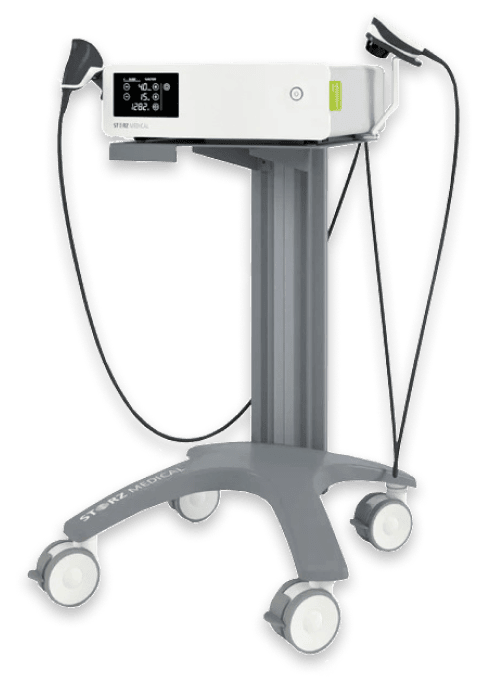
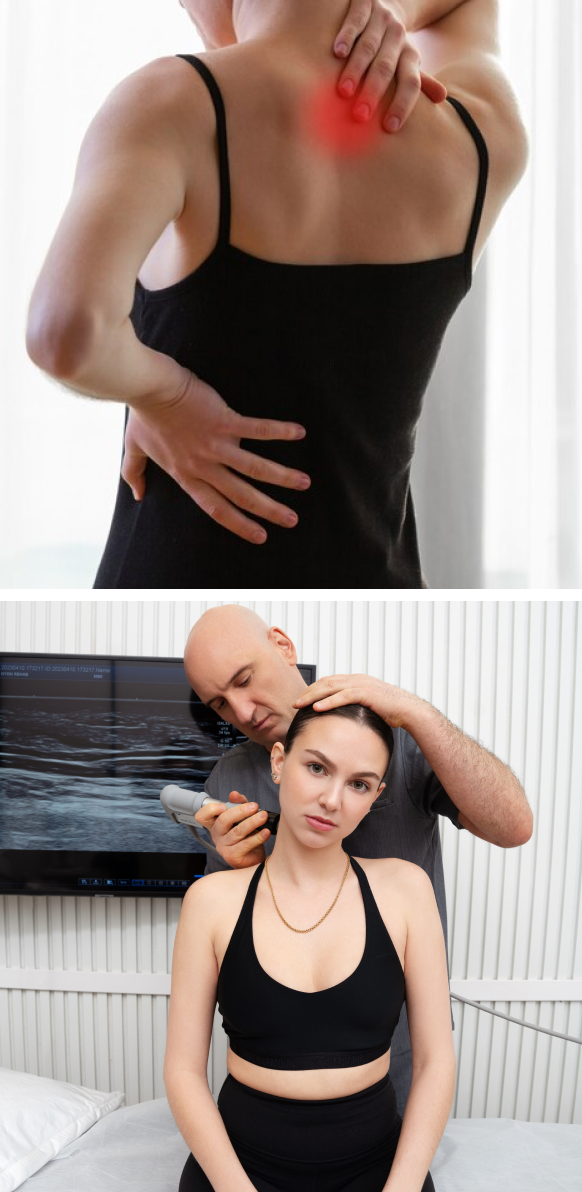
Shockwaves have been used successfully for years to treat bone fractures, tendon ruptures and soft tissue injuries, and it is widely accepted that shockwaves have different effects on different tissue types. Until recently, little research has been done to measure the effects of ESWT on myofascial tissue.
Fascia has unique characteristics compared to other tissue types, and data from research on tenocytes and skin fibroblasts cannot automatically be translated to fascial tissue. Fascia is highly innervated with both sensitive and autonomic nerve fibers, and alterations to fascia can generate myofascial pain that affects movement quality.
The fibrotic component of fascia shares certain characteristics with tendons in the respect that it is highly collagenous. Type 1 collagen is a major component of fascia, and type 3 collagen plays a key role in the early stages of fascial injury repair. But unlike tendon tissue, fascia has gliding and elastic properties that depend on the presence of hyaluronan (HA), a polymer that binds to water, with the capacity to retain up to 1000 times its weight in water.
A recent 2022 study explored the effect of ESWT on fascia, and demonstrated for the first time that shockwaves can lead to in-vitro production of hyaluronan-rich vesicles, immediately after treatment. ESWT has been shown to stimulate an increase in cell proliferation and synthesis, and remodeling of the extracellular matrix.
The researchers observed an immediate release of hyaluronan-rich vesicles, along with type 1 and type 3, as soon as one hour post-treatment. Tissue proliferation increased at 4 hours, and was maintained at 24 hours. They concluded that fascial cells respond to ESWT by regulating and remodeling the extracellular matrix (ECM).
At NYDNRehab, we use a combination of focused and defocused shockwaves to treat myofascial pain, in conjunction with fascial manipulation therapy.
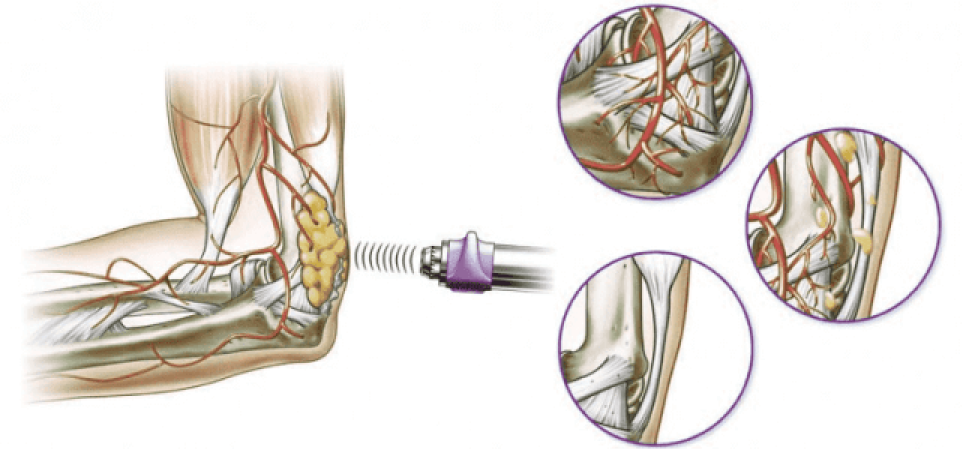
ESWT can help the body to produce more collagen. Collagen is a protein found throughout the body that gives tendons and ligaments their structure. The collagen fibers produced by the body after shock wave therapy are forced into longitudinal structures that make tendons stiffer and denser, stopping and reversing tendon degeneration.
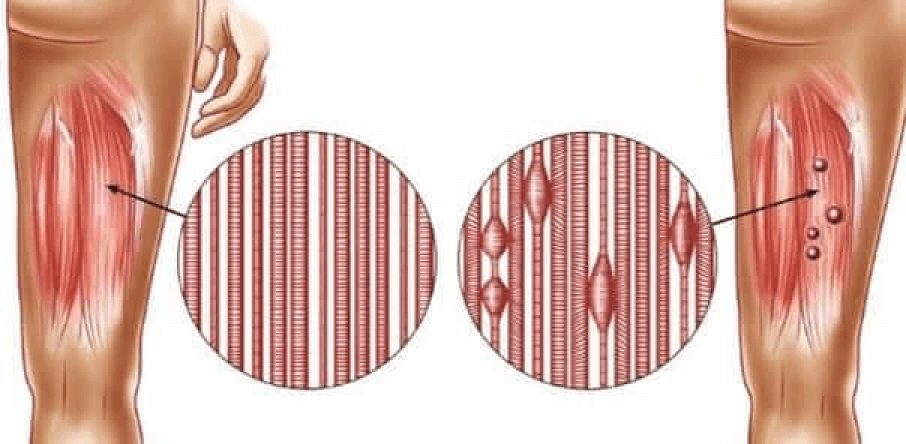
Trigger points are tightly contracted bands of muscle tissue that are the principal cause of pain in the back, neck, shoulders and limbs. Their dysfunctional sarcomeres contract so tightly that they begin to cut off their own blood supply. This causes a buildup of waste products, which in turn irritates the sensory nerve endings, causing even more pain. This vicious cycle is called a metabolic crisis.
Although the precise mechanisms of ESWT’s effect on trigger points is unclear, it is assumed that the delivered acoustic energy unblocks the calcium pump in the sarcomere, causing the trigger point to release and immediately stopping pain.
ESWT can be successfully used to treat and manage spasticity after stroke, and in motor disorders such as cerebral palsy, multiple sclerosis, dystonia and severe writer’s cramps.
Our years of experience using shockwave therapy have helped hundreds of patients to successfully eliminate musculoskeletal pain and dysfunction. Today, a treasure trove of research is emerging that supports the efficacy of shockwave therapy for treating pelvic and reproductive disorders.
Recent research has found shockwave therapy to have long-term success in treating:
Pelvic disorders are common in both men and women, but patients are often reluctant to seek treatment due to embarrassment. Shockwave therapy provides a safe, non-invasive and effective solution for a broad range of pelvic and reproductive disorders, with minimal discomfort for the patient. Treatment sessions are brief, and many patients report improvement after their very first session.

Focused ESWT is used as a regenerative treatment for damaged tendon, muscle and bone tissue. This technology produces high frequency sound waves to stimulate the body’s own reparative mechanisms. It is especially effective for chronic degenerative tendon disorders and myofascial pain syndrome.
SoftWave is a groundbreaking regenerative mechanotransduction technology that accelerates tissue healing. Its patented electro-hydraulic applicator delivers high-speed soundwaves that can penetrate up to six inches in depth. SoftWave’s defocused and linear focused shockwaves recruit maximum stem cells to the treatment site to promote healing. SoftWave’s wider and deeper penetration using defocused energy is a preferred treatment option for a broad spectrum of conditions, ranging from orthopedic injuries to pelvic health.
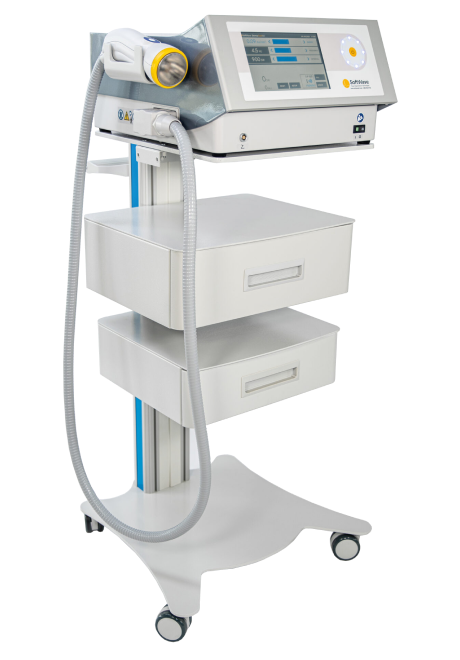
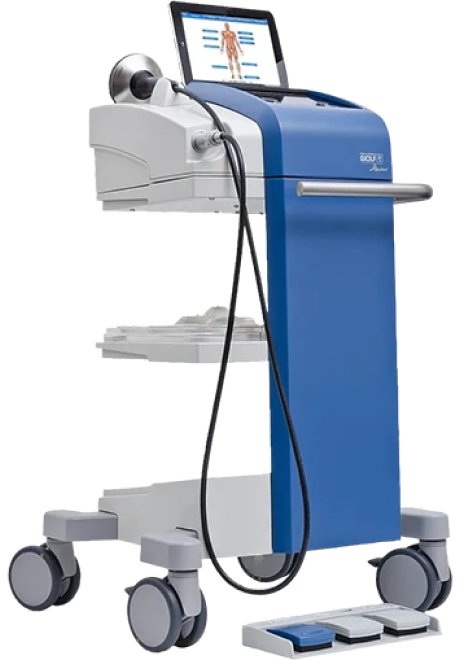
MyACT is a new type of focused shockwave technology that allows for deeper compression of the focused waves. Its higher frequency allows for precise neuro modulation under ultrasound guidance, with a special linear head for treating myofascial pain. This innovative shockwave technology transforms the mechanical energy of shockwaves into biochemical signals that precisely target damaged tissues. Its versatile controls let us fine-tune its output levels for precise and personalized patient care.
EMTT is a fairly new technology that transmits high energy magnetic pulses to targeted tissues. The magnetic waves synchronize with the body’s own magnetic fields, causing a disturbance that triggers a regenerative response. EMTT waves can penetrate deep tissues up to 18 cm beneath the skin’s surface, to target difficult-to-reach tendons, muscles, bones and nerves.


EPAT, sometimes called defocused shock wave therapy, is not a true shockwave. It uses mechanical pressure waves to enhance blood circulation, improving oxygen and nutrient delivery to muscle and fascia tissues, but has minimal regenerative properties. We combine EPAT with different types of shockwaves for holistic treatment, without additional cost to the patient.
HEIT uses electromagnetic fields to penetrate cells, tissues, organs and bones, to reactivate the electrochemical function of cells and cell membranes. HEIT generates a magnetic field 600 times stronger than the field of a normal magnet, to stimulate healing of nerves, muscles and blood vessels.
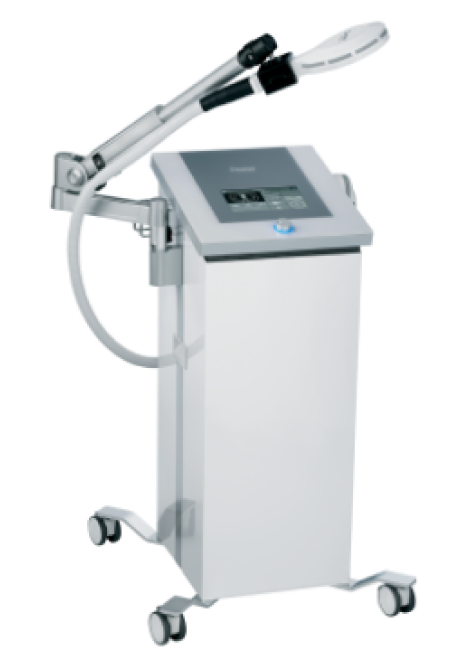
Dr.Kalika has spent over 20 years refining his approach to diagnostic musculoskeletal ultrasonography. He has extensively studied the qualities of different shockwaves and their effect on different tissue types, and has perfected his approach to local and global shockwave therapy.
Many practitioners who perform shockwave therapy are under-qualified:
When applied appropriately by a trained and certified clinician, shockwave therapy is the most effective and broadest regenerative treatment available, but its inappropriate application can be completely ineffective. Shockwaves deliver immediate anesthetic relief to patients, but when performed too frequently, they can destroy tissues instead of healing them.
Don’t settle for shockwave therapy that falls short of its promises. To get the safest, most accurate and effective shockwave therapy in NYC, contact NYDNRehab today!

Using high-resolution diagnostic ultrasound imaging
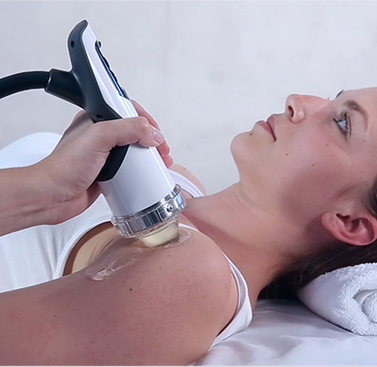
Combination of Stortz Focused, Softwave defocused, and Radial Shockwave

Imaging not included – please bring any available MRI or xray images
*Requires $200 pre-treatment evaluation